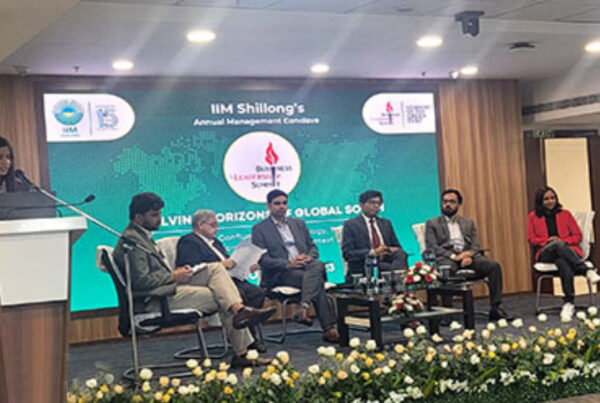A business that has its fingers on the pulse of its customers is a business that thrives. Sentiment analysis, or opinion mining, is the perfect tool to help you do just that. It entails interpreting data on consumer sentiment using natural language processing (NLP).
While sentiment analysis has been there, with the increasing availability of data and development of advanced learning tools, its relevance in drawing insights from consumers’ emotions, mood and behavior patterns has increased significantly. Organizations can track the brand and product sentiment in consumer feedback and understand demand better.
What all does it cover?
- Extracting relevant information while discarding irrelevant data
- Identifying polarity of opinion or thought
- Detecting if there is any negative opinion
- Categorizing content based on positive or negative remarks
Where does it help?
In understanding patterns in communication
The role of sentiment analysis in monitoring and understanding communication is growing faster than ever before. Analyzing consumer feedback, such as obtained from survey or social media discussions, can help you understand what would appeal to your customers. Accordingly, you can tailor products and services to meet the requirements.
Monitoring also helps you identify and address irate customers appropriately. Moreover, comparing sentiment over quarters is a good way to assess the changes required. You can then do further deep-dive to figure out why the sentiment is declining or improving.
In marketing and sales
Insights drawn from sentiment analysis data form the basis for making informed sales and marketing strategies. Sentiment analysis also helps in evaluating social media posts, improving crisis management and brand strength, and turning digital PR into actual activities. The more you know your consumers, the better the chances of retaining them.
Sentiment analysis is the window to gauging how social media and third-party website marketing strategies are performing. To understand how a new product is faring, comments on the internet/social media are a veritable source to assess customer response: are they encountering problems, or what is the feedback from the target audience.
Say, you are a clock manufacturing company that has launched a digital alarm clock and is actively tracking the product’s traction on social media. Now if one of the consumers raises an issue on a popular channel where you interact about some fault in the battery backup, as a prompt manufacturer, you must revert at the earliest with a personalized answer. You could immediately issue an apology saying you will look into the specific product and see if this is a one-off incident. You could then offer to replace the faulty piece at its earliest. However, if an increasing number of people is flagging the issue on different channels, it means the entire product line may need to be recalled. You could then respond accordingly that the product is being looked into at the highest level, and clearly mention how and where customers can connect for smooth refund or return until the issue is rectified.
Or you are a cosmetics manufacturer looking to engage with your audience on Black Friday. You could schedule your messages ahead of time and come up with engaging contests. Depending on the interest you garner, you could either repeat the campaigns, reinforcing your strategies, or revisit plans, depending on the findings of the analysis.
In supplementing insights drawn from social media responses
Likes, comments, and shares are metrics in traditional social media monitoring. While these may indicate a company’s popularity, they don’t necessarily provide deeper insights into consumers’ emotions: preferences, dislikes, or expectations. Sentiment analysis, on the other hand, can be used to understand if consumers are (implying feeling) ‘positive’, ‘negative’, or ‘neutral’ about a certain brand, product, or topic. Emotionally-charged words give a more incisive understanding. For instance, ‘crappy’ and ‘hate’ indicate a negative sentiment, while ‘ awesome ‘and’ amazing’ reflect a positive sentiment.
In crisis management and brand health
In a crisis situation, sentiment analysis helps in determining how fans and opponents are reacting to the incident. Evaluations at regular intervals after the crisis has passed are effective in gauging if customers have moved on, or continue to harbor negative feelings.
In strategizing
Sentiment analysis, especially with the use of advanced learning tools, can help you in generating rich insights. These can come handy at any stage of the business cycle, either when you are about to launch a product, or enter a domain, or want to know how your product is doing in the market. Based on the business intelligence data gathered, you can build effective strategies.
What does the future of sentiment analysis look like?
Given the change in perception of consumers as assets and the rise of the shrewd consumer himself, sentiment analysis has become more important than ever. Investing in it is critical to stay relevant in the field and beat competition. Greater the availability of data, better the insights and, therefore, chances of success.
However, there are challenges. First and foremost is to ensure the quality of data obtained. If information is insufficient, sentiment analysis may not yield the insights required. Inaccurate data will lead to weak insights, poor clarity and erroneous conclusions.
This, therefore, puts the spotlight on the techniques to be involved. While machine learning and advanced algorithms go a long way in deep mining, they may not be adequately trained to capture opinion or expressions, especially as these are subjective and not easy to interpret.
Here, the onus will lie with you, how your organization is able to balance advanced learning systems with other tools/techniques such as information extracting or semantic tools, or the methods you employ to sanitize data. The core objective at any point should be to obtain precise and accurate information.
At the end of the day, it is all about prioritizing your customers and generating value for them. How well you understand, relate and cater to your customers, will determine the long-term success of your business. If you would like to have more information on this, please connect with Radhakrishnan Rajaram @ radhakrishnanr@avalonglobalresearch.com, or Suyog Keluskar @ suyogk@avalonglobalresearch.com.




